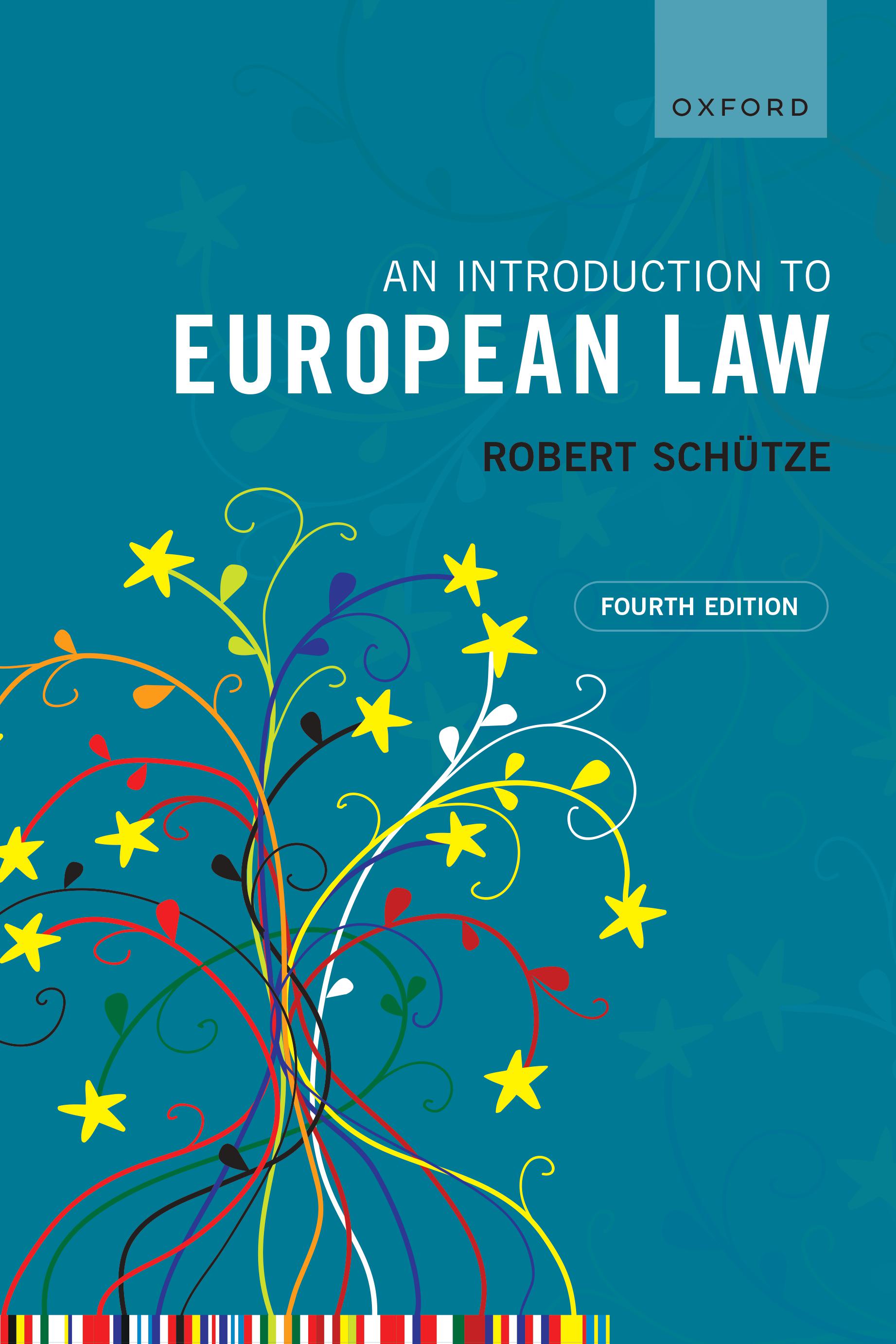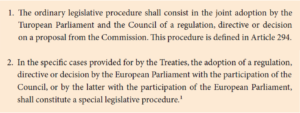1. The ‘Ordinary’ Legislative Procedure
2. The ‘Special’ Legislative Procedures
3. The Principle of Subsidiarity
4. Excursus: The (Ordinary) Treaty-Making Procedure
Introduction*
Each society needs common rules and mechanisms for their production. Legislation here refers to the making of laws (legis). But what is legislation? American constitutionalism defines legislation as an act adopted by ‘Congress’. Behind this bicameral legislator stands a legislative procedure. This legal procedure links the House of Representatives and the Senate. German constitutionalism also adopts such a procedural definition of legislative power. However, unlike many national legal orders, the EU Treaties expressly distinguish two types of legislative procedures: an ordinary legislative procedure and special legislative procedures. Article 289 TFEU here states:
European ‘legislation’ is thus—formally—defined as an act adopted by the bicameral Union legislator: the Parliament and the Council. According to the ordinary legislative procedure, the Parliament and the Council act as co-legislators with symmetric procedural rights. European legislation is here seen as the product of a ‘joint adoption’ by both institutions.
But the Treaties also recognize special legislative procedures (Figure 2.1). The defining characteristic of these special procedures is that they abandon the institutional equality between the Parliament and the Council. Logically, then, Article 289(2) TFEU recognizes two variants. In the first variant, the European Parliament acts as the dominant institution, with the mere ‘participation’ of the Council in the form of ‘consent’. The second variant inverts this relationship. The Council is here the dominant institution, with the Parliament either participating through its ‘consent’, or in the form of ‘consultation’.
Having analysed the various Union institutions in Chapter 1, this chapter explores their interaction in the creation of European (secondary) law. Sections 1 and 2 respectively discuss the ordinary and special legislative procedures in more detail. Section 3 looks at the principle of subsidiarity—an EU constitutional principle that was designed to prevent the Union legislator
Figure 2.1 Structure of the Union legislator (included with permission of Oxford University Press)
from exercising its competences where the Member States would be able to achieve the desirable social aim themselves. Within the Union legal order, this principle has been primarily understood as a procedural safeguard that—indirectly—involves the national parliaments prior to the adoption of a legislative act. Finally, Section 4 looks at the procedure for the conclusion of international agreements. These agreements, while not formally concluded under a legislative procedure, nonetheless constitute a rich (external) source of European secondary law.
*All footnotes have been omitted for this excerpt.


